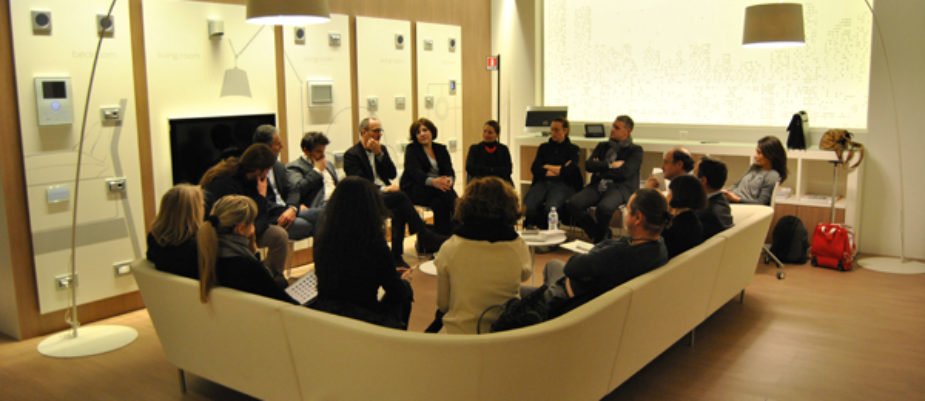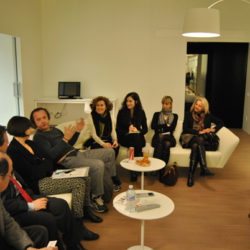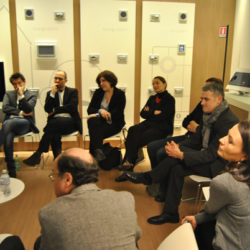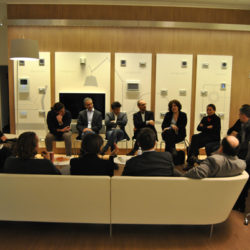
At Showroom BTicino Milan, the monthy fluid and nomadic meeting on lighting.
The structure of the webmagazine WOW! is based on a nomadic, fluid and jelly editorial staff. Jelly is also the structure of the session that offer other subjects or stimuli.
The starting point for the debate is given by Jean Nouvel’s “j’accuse” against the standardization underlying the design of working and common environments, finding preposterous the use of dull lighting systems set in contact ceilings in office buildings.
The WOW! Jelly Session #4, at Showroom BTicino Milan, was attended by:
Jacopo Acciaro (Voltaire), architect; Jessica Astolfi (PoliMI), architect; Daniela Carta (MQA), architect; Luca Colombo (Zumtobel); Massimo Facchinetti (Facchinetti & Partners) architect; Marco Fiorentino (BTicino); Gianni Forcolini, architect; Silvia Gervasoni (assistente PoliMI), architect; Luigi Guadagno (Studio Marco Piva) architect; Lenka Lodo (Goring & Straja Studio), Tatiana Milone, architect; Gianpaolo Monti (BTicino), engineer; Marzia Morena (PoliMI, Rics), architect; Lorenzo Palmeri, architect; Manuela Scisci (BTicino), Corporate Communication; Andrè Straja (Goring & Straja Studio), architect; Renata Sias, editor WOW! webmagazine; Maximilian Speciani, web designer WOW! webmagazine.
Everybody agree with Jean Nouvel’s “accusation” and the fact that saving at all costs is the chief “motive”, but there also other reasons. Often it’s a multitenant building forcing to the most extreme flexibility, in contrast with a vision of personalization and quality. Almost always the building is considered a “financial product” that must guarantee profitability, while the designer would rather aim at beauty, but these two worlds are not “on speaking terms”. People are carried away by the debate on the architect’s role… the designer’s model of quality is often made of “image”, status, fine quality is less considered. Someone maintains that, while for retail shops or hotels the lighting is a basic component to “sell”, unfortunately that’s not so important for work places: employees work in any case. Definitely in conflict with those, who claim that the quality of light affects motivation, good mood, off sick, productivity. Only if the architects has a specific lighting-technique skill can offer solutions; but other people think that the architect has not to be an all-round expert and must turn to consultants for any special problem, and act as a coordinator in an integrated planning team formed by experts. Actually, lighting is often dealt with at the end of the project, when the budget, too, is almost finished and, although the project was carefully defined, they tend to simplify, trivialize, distort the initial project to cut costs. Yet there are examples of good designs made by a team, offices of companies that share their employees’ vision and are quality-conscious. Basically is a matter of Culture: you can’t convince a customer of the value of Quality, so as you can’t “convince a fish to fly”.
Do you agree? Add a comment or your point of view on WOW!




















